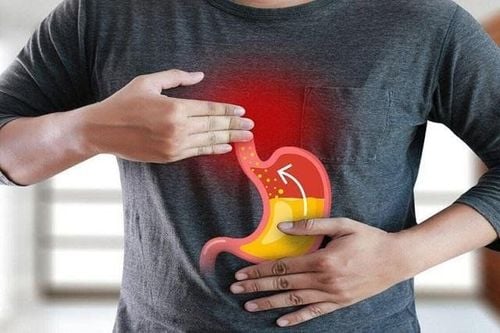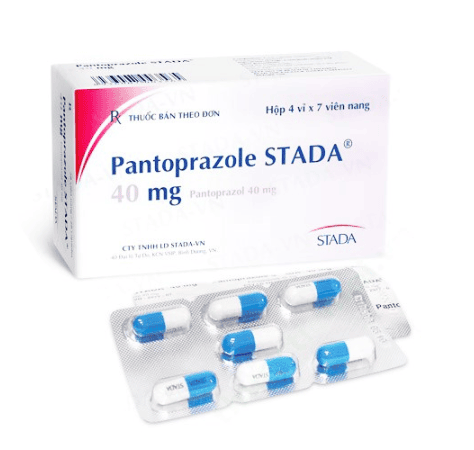This is an automatically translated article.
Posted by Master, Doctor Mai Vien Phuong - Department of Examination & Internal Medicine - Vinmec Central Park International General Hospital
Antacids are first-line therapy for esophageal disorders such as reflux esophagitis, erosive esophagitis, and Barrett's esophagus. The primary mechanical action of PPIs is to reduce gastric acid production by inhibiting the hydro-potassium ATPase pump - a transmembrane protein responsible for the release of hydrochloric acid into the gastric lumen.
1.The use of antacids has been shown to alter the microbiome of the oesophagus
The use of antacids has been shown to alter both the gastroesophageal and colon microbiota. The most clearly defined role is to reduce gastric acidity, thereby allowing the persistence of oral organisms that colonize the distal esophagus. This pH-related microbiome alteration could allow the breeding of bacterial species that would not otherwise grow under more acidic conditions. For example, there was a significant increase in oral microorganisms such as Rothia dentocariosa, Rothia mucilaginosa, Scardovia spp... and Actinomyces spp. in the gut microbiota has been reported following PPI administration.
2.The effect of antacids may depend on the location of the esophagus
In the distal esophagus, the effect of antacids may be more due to microbial-associated inflammatory changes, whereas it was previously thought to be due to mucosal damage in direct contact with acid. A study of patients with non-erosive reflux disease (NERD), erosive reflux esophagitis, and Barrett's esophagus compared the use of antacids with no use in each and no, respectively. found a change in α- or β-diversity between the antisecretory and non-antacid users of each group.
In particular, the use of antacids was associated with an increase in Firmicutes and Proteobacteria in Barrett's esophagus and a decrease in Bacteroidetes in NERD and reflux esophagitis (RE). In another study, biopsies performed before and after 8 weeks of antacid therapy (lansoprazole 30 mg twice daily) showed a significant reduction in gram-negative Comamonadaceae spp. Clostridiaceae and Lachnospiraceae spp.) and Actinomycetales (Micrococcaceae and Actinomycetaceae spp.).

3. Acid-producing bacteria found in the esophagus and oral cavity
Many studies provide evidence that the use of antacids may have effects beyond acid suppression. This supports a possible mechanistic role for antacids that alter the gastrointestinal microbiota, favoring gram-positive bacteria to prefer a higher pH environment.
This effect will reduce the induction of Toll-like-receptor (TLR)/inflammatory cascade caused by gram-negative LPS-producing bacteria. Although their association with reflux esophagitis is unknown, acid-producing bacteria are found in the esophagus and oral cavity. The use of antacids can directly target the proton pumps (the P-type ATPase enzyme) of these bacteria (especially Streptococcus pneumoniae and Helicobacter pylori). Further studies were performed to confirm determine whether these bacteria are causative factors of reflux esophagitis by directly producing acid, which in turn is inhibited by PPIs. In addition, administration of antacids may indirectly alter the natural microbiota in non-gastric tissues expressing H+/K+-ATPases by shutting down the proton pump.
4. Antacids can also reduce inflammation in addition to direct acid suppression.
In esophageal squamous cells, omeprazole has been shown to inhibit interleukin (IL)-8 expression by blocking nuclear translocation of a nuclear factor-kappa beta subunit. (NF-kB) and binding of the AP-1 subunit to IL-8 promoter. IL-8 is an inflammatory mediator involved in the inflammatory pathways of reflux esophagitis, Barrett's esophagus, and EAC. Increased expression of LPS from gram-negative bacteria, and subsequent activation of the TLR-4-NF-κB pathway are associated with the expression of downstream mediators such as IL-8 and cyclooxygenase ( COX) -2. The extent of both correlates directly with the transition from dysplasia to Barrett's esophagus. Therefore, if PPI therapy affects IL-8 expression by blocking NF-kb and AP-1, there may be a role in therapeutic uses beyond direct acid suppression.
Vinmec International General Hospital is one of the hospitals that not only ensures professional quality with a team of leading medical doctors, modern equipment and technology, but also stands out for its examination and consultation services. comprehensive and professional medical consultation and treatment; civilized, polite, safe and sterile medical examination and treatment space.
Please dial HOTLINE for more information or register for an appointment HERE. Download MyVinmec app to make appointments faster and to manage your bookings easily.
References: D'Souza SM, Houston K, Keenan L, Yoo BS, Parekh PJ, Johnson DA. Role of microbial dysbiosis in the pathogenesis of esophageal mucosal disease: A paradigm shift from acid to bacteria? World J Gastroenterol 2021; 27(18): 2054-2072 [DOI: 10.3748/wjg.v27.i18.2054]













